Through history, the Mela has held different meanings for ascetics, the colonised, colonisers, and tourists, but all have been moved by its grandeur points out Atanu Biswas.

Under the pen name 'Kalkut', meaning "life-taking poison," the prolific Bengali writer Samaresh Basu authored a travelogue-style novel more than 70 years ago, titled Amrita Kumbher Sandhaney, which translates to 'In Search of the Pitcher of Nectar'.
It was written in the backdrop of India's first Maha Kumbh after Independence in 1954. Like this year, there was an unfortunate incident of deaths due to a stampede that year too, although at a different scale.
Hundreds lost their lives in the 1954 Kumbh stampede in Prayag, an event that was also woven into the novel's plot.
Notably, Amrita Kumbher Sandhaney has served as a lens through which generations of Bengali readers have viewed the Maha Kumbh.
In recognition of the Kumbh Mela's contribution to 'cultural diversity and creativity, as well as tolerance and learning', UNESCO inscribed it on the Representative List of the Intangible Cultural Heritage of Humanity in 2017.
As the 'largest peaceful gathering of pilgrims on earth', it continues to draw intense global interest.
However, its evolution over the centuries can also be traced through the perspectives of some of its illustrious visitors.
Many believe that the Kumbh Mela has been around since time immemorial. Of course, there is historical documentation of an annual Magha Mela, with larger gatherings every six or 12 years.
About 300 years prior to Christ's birth, Megasthenes, the Greek envoy to Chandragupta Maurya's court, is reported to have visited a 75-day-long mela.
In 644 CE, the Chinese Buddhist monk Xuanzang (Hiuen Tsang) described a large mela, or 'age-long festival', that drew over 500,000 people to Prayag.
The kindness of King Harshvardhana, who generously donated among the public during the event, was mentioned.
However, debates persist over whether the Kumbh Mela's name and form were established at that time.
The Persian documents Khulasatu-Ut-Tawarikh (1695 CE) and Chahar Gulshan (1759 CE) might have contained the first known references to the Kumbh Mela by name.
Also, according to Bahadur Singh's Yadgar-e-Bahaduri (1834 CE), the pilgrim taxes imposed by the British significantly reduced attendance at the Kumbh Mela that year.

In his 1858 book The Indian Empire, British civil servant Robert Montgomery Martin wrote that it was 'difficult to convey an adequate idea of the grandeur and beauty' of the Haridwar Kumbh Mela.
In addition to priests, soldiers, and religious mendicants, many merchants also attended the fair. At the fair, Europeans also offered their goods for sale.
The dancing girls performed for the wealthy guests as well. The Kumbh Mela in Haridwar is depicted in a 1850s painting by English painter J M W Turner.
Kama Maclean, in her 2008 book Pilgrimage and Power: The Kumbh Mela in Allahabad, 1765-1954, explained how the ancient Magha Mela was rebranded and remobilised as the modern-era Kumbh Mela -- particularly after the Indian Rebellion of 1857 -- shaped by socio-political developments during the colonial period and as a response to Orientalism.
For the colonised, it was a sacred space where foreign dominance and interference were unwelcome, while for the British colonial State, it was a potentially volatile gathering that required strict regulation and control.

In 1895, Mark Twain attended the Kumbh Mela.
'It is wonderful,' he wrote, 'the power of a faith like that, that can make multitudes upon multitudes of the old and weak and the young and frail enter without hesitation or complaint upon such incredible journeys.'
In his Autobiography Of A Sadhu: A Journey into Mystic India, published in 2010, Baba Rampuri, perhaps the first sadhu from the West to attend the Mela, transports us to the ethereal core of India with his voyage of extremes.
Additionally, Nityananda Misra's 2019 book, Kumbha: The Traditionally Modern Mela, provides a wealth of information about the Kumbha's cultural elements, including literature, the arts, and music, and makes the case that the mela is arguably the most inclusive and diverse human assembly.

It's possible that Mark Twain was romantically moved by the event's grandeur, which saw two million pilgrims.
Sixty years later, Kalkut was similarly astounded by the variety of people gathered at the mela.
He responded, '[I'm] going to see people,' when asked why he wished to visit Kumbh.
'What could be more fascinating than humans in this world?' Kalkut penned.
Kalkut said that he was finding meaning in his pen name during this quest. Who knows, maybe the pitcher did carry a drop of Amrit like that too!
Atanu Biswas is professor of statistics, Indian Statistical Institute, Kolkata
Feature Presentation: Aslam Hunani/Rediff.com


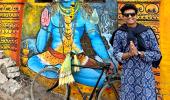
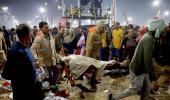
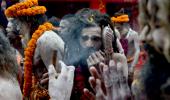
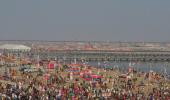

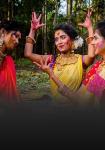


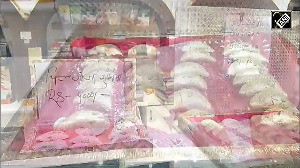
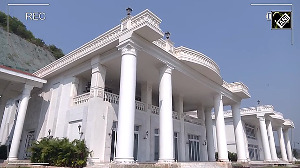
 © 2025
© 2025